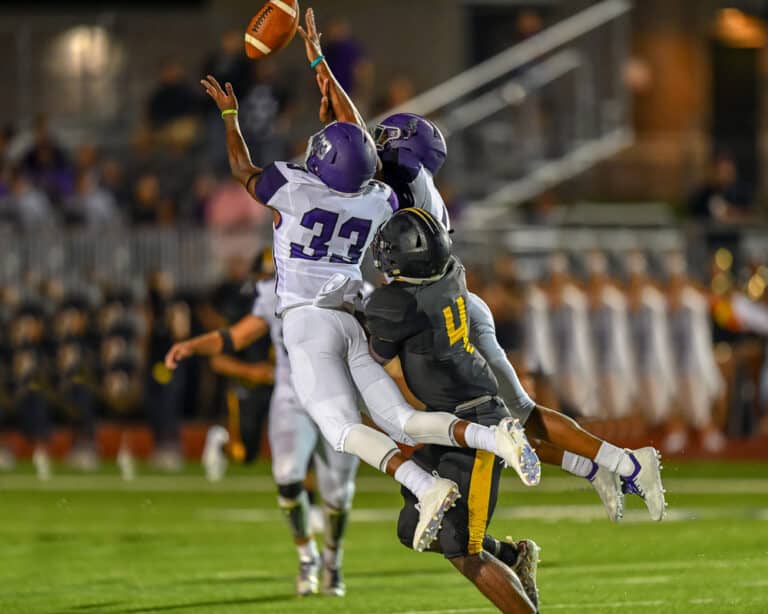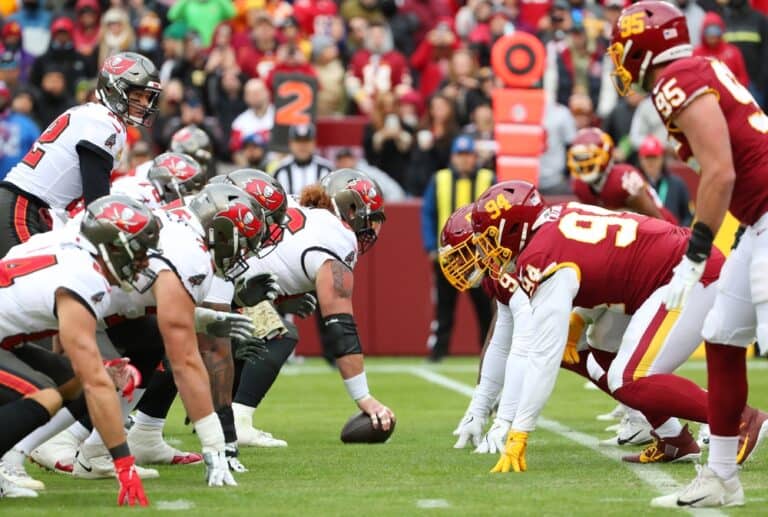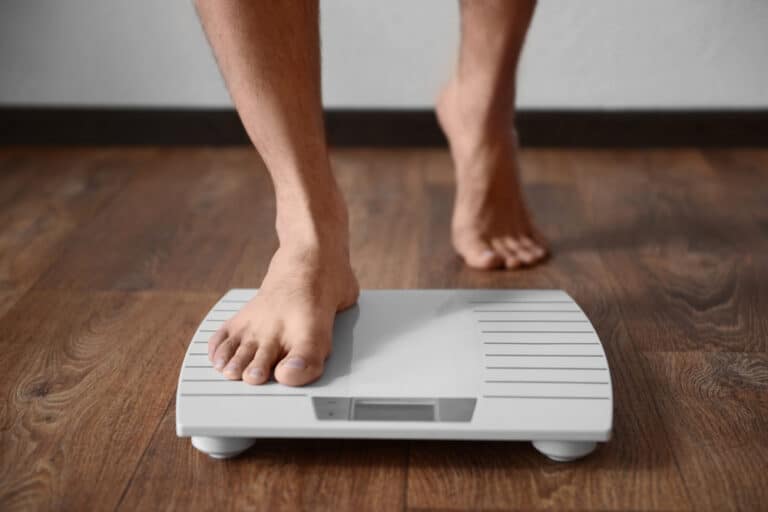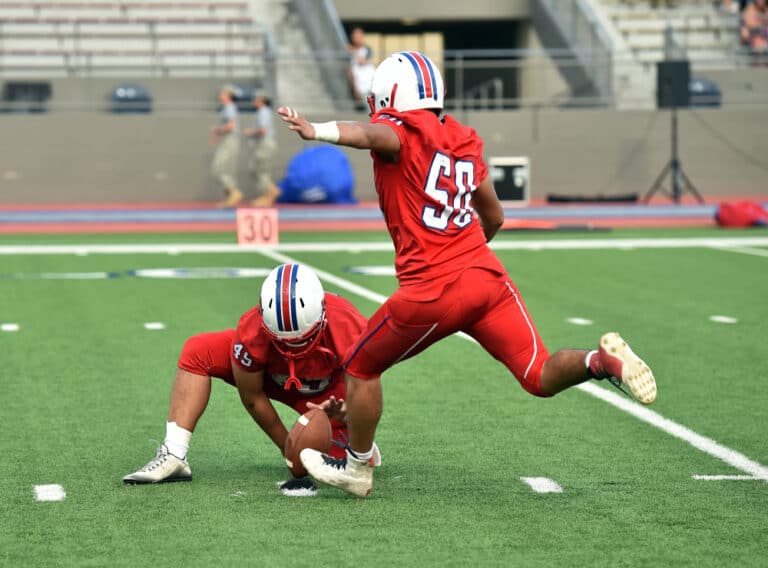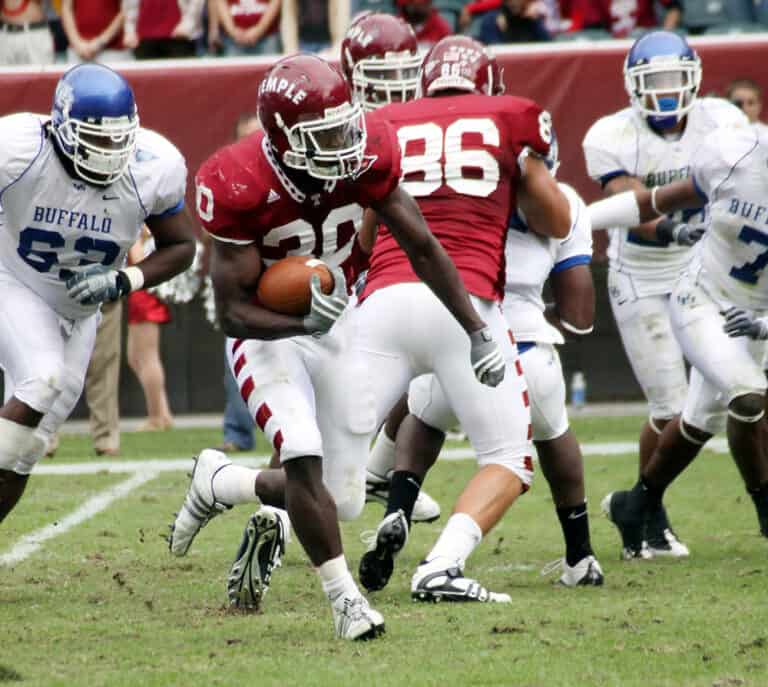Dimensions Of A Football Field (All You Need To Know)
Editorial credit: Ken Durden / Shutterstock.com
NFL football is one of America’s most popular sports, but not everyone that watches it may know what the dimensions of a football field are, and while you don’t need to know this to enjoy the game, it adds that little bit more to the experience if you do!
A football field measures 120 yards long (360′) and 53,3 yards wide or 160 ft wide. The area is only 100 yards from goal line to goal line consisting of 10 x 10-yard intervals, but the end zones measure 10 yards each, extending the overall length to 120 yards.
While these measurements are the basic dimensions of an NFL football field, not all football fields are the same, so let’s get on the field, get the tape measures out and get into the nitty-gritty of the NFL football field.
The Markings On A Football Field
While the dimensions of the football field are fairly straightforward, there are some interesting additional lines and markings on the football field’s outer and inner playing area, so let’s look at those individually and what they mean.
The Hash Marks
These two sets of small lines run parallel to the goal lines and are exactly one yard apart. One group runs along the sidelines and is marked between each yard line that lies five yards apart up and down the field’s length, and they are 2 ft long.
The second set of hash marks runs up the center of the football field, and here is where there are some differences in how they are laid out between NFL, College, and High School football fields. The NFL football field hash marks are 18 feet, 6 inches apart, and perfectly aligned with the goal posts.
In college football, hash marks are slightly wider than in NFL and are marked 40 feet apart; for high school football fields, these hash marks are measured 53 ft and 4 inches apart.
Hash marks in the NFL are placed 70 feet, 9 inches from the sideline and were first seen on pro football fields in 1933 when they were used to define differences between pro and college football fields.
The Yard Lines On The Football Field
The yard lines are marked across the width of the field and travel the length of the field. The yard lines are used to designate five-yard increments on the football field, and there are 19 of them in the NFL configuration.
The yard lines stop eight inches from the six-foot solid sidelines in all football leagues, and the goal lines are not included in this measurement.
The White Numbers On The Football Field
Every 10 yards starting from the goal line and increasing as they move toward the center line, large numbers painted in white denote 10-yard increments on the field. These numbers run from 10 to 50 yards in each field half and are six feet high and four feet wide.
So if you are standing on the center spot on the football field to your immediate left and right 10 yards away, you will see a line marked 40 and then 30, then 20, and then 10. The halfway line is drawn as 50 as it is 50 yards from each opposing goal line.
These numbers make it easy to ascertain how much yardage each play has gained, whether rushing or passing. Along with the chain measurements, the yard lines, and the hash lines, they allow the referees to establish the exact point on the field for the next play and whether first downs have been achieved by advancing the ball 10 yards from the previous line of scrimmage.
These numbers are painted using stencils to ensure consistent dimensions according to the rules of the field as stipulated by the commissioner. Next to each marked number is an arrow pointing to the closest end zone on the field.
This only appeared in the 1970s as more league games were televised. So college or NCAA games that are televised will have field numbers with arrows, but because high school games are generally not televised or don’t receive as much coverage, their fields often don’t have arrows on them.
The Sidelines On A Football Field
Sidelines and goal lines are generally painted white, but other colors such as gray have also been used. The sidelines mark the edges of the out-of-play boundary. These lines are six feet wide, run the full length of the field, and are 160 feet apart.
The End Zones And End Lines
The end zones are found at each end of the field, are 10 yards long, and extend the width of the area. The back of the end zone is marked by an end line six feet long.
While not directly related to the field dimensions, the goal posts in the NFL are 10 feet high and 18 feet and 6 inches wide. Goal posts in high school fields are also 10 feet tall but wider at 23 feet and 4 inches. The goal post pylons are located three feet outside the end line.
The Player Benches & Coaching Box
There are two areas designated for coaches, players, and medical staff on the NFL field. A broken white line six feet away from the sideline on each side where the coaches and players may stand and observe the game.
Six feet beyond that, another broken line defines where the bench area begins, and players, medical staff, and other team members may congregate in that area. This is where medical staff may examine injured players that have come off the field.
Sitting six feet from the restricted area, the coaching box is six feet deep and 150 feet long, with one on each side of the field, and the team area is 12 feet deep by 150 feet long.
Other Lines And Markings On The Football Field
- Another line is painted on the center of the 2-yard line, marking the scrimmage line for the two-point conversion attempt.
- There are sometimes decorative yard lines with the American flag or team colors, and the 20-yard line indicates the start of the red zone.
- At the center of the 35-yard line on each side, a small ‘X’ may be painted to mark the location for the kickoff.
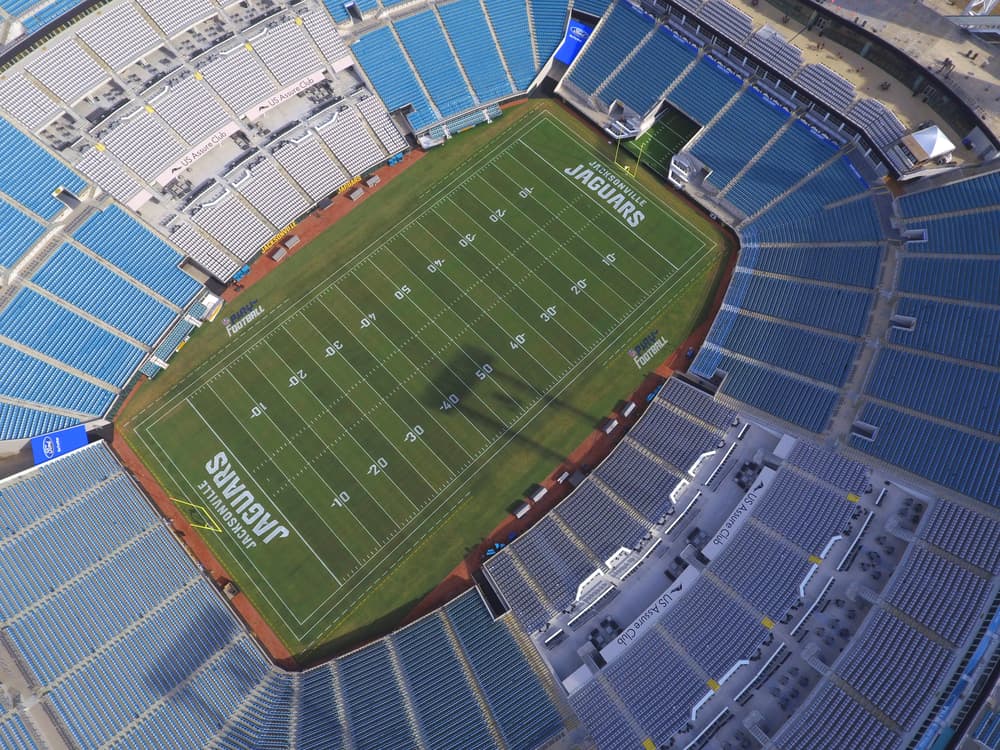
The History Of The NFL Football Field’s Dimensions
The current dimensions of the football field have been the same since 1912. With the birth of professional football in 1892, the area was 110 yards long and had a 55-yard line! Plus, there were no end zones as we know them today, and the goal line represented the end of the field.
From 1912, the 10-yard end zone areas were added, which increased the overall length of the field to 120 yards, while the 55-yard line fell away to be replaced with the 50-yard line.
While the field’s length was changed to the dimensions we have today, the width has remained the same at 53,33 yards or 160 ft across.
The hash marks were only added in 1933, heralding one of the first major changes in the pro game from the college game. Before the hash marks, the next play would be marked from where the ball was declared dead; with the advent of the hash marks, the ball was placed on the closest hash mark.
Canadian Vs. American Football Field Dimensions
You may think a football field is a football field in the continental US, but our northern neighbors play their game on a slightly larger area than we do here in the USA.
Although the Canadian field was similar to the US field before 1912, the game up north is played on a lot that measures 110 yards long and 65 yards wide vs. the USA’s 100 yards long and 53,33 yards wide.
This would exclude the end zones, so in total, with the end zones, the Canadian field would measure 150 yards long, while the standard NFL field is only 120 yards long. Before 1986, Canadian end zones were 25 yards deep, but that changed to 20 yards, and with a total area of 87750 sq ft against 57600 sq ft, the Canadian field is 34% larger than their US counterparts.
The goal posts in Canadian Football are still placed on the goal line, so there are still some spectacular collisions in that game; another difference is the positioning of the hash marks on the Canadian field, which are 69 feet from the sideline vs. the 70 feet, 9 inches in the NFL.
While not related to the field’s dimensions, the larger Canadian playing field area adds one extra player to the teams, with Canadian teams fielding 12 players while NFL teams only field 11.
Conclusion
The dimensions of a football field through high school, college, and professional leagues are pretty similar, with the only discernable differences being the size of the goals and the positioning of the hash marks.
It is highly unlikely in the coming years that any additional field dimension changes to the football field are on the cards as the mold has been firmly entrenched for more than 100 years, and that formula has proved to be successful and consistent in all the leagues.


